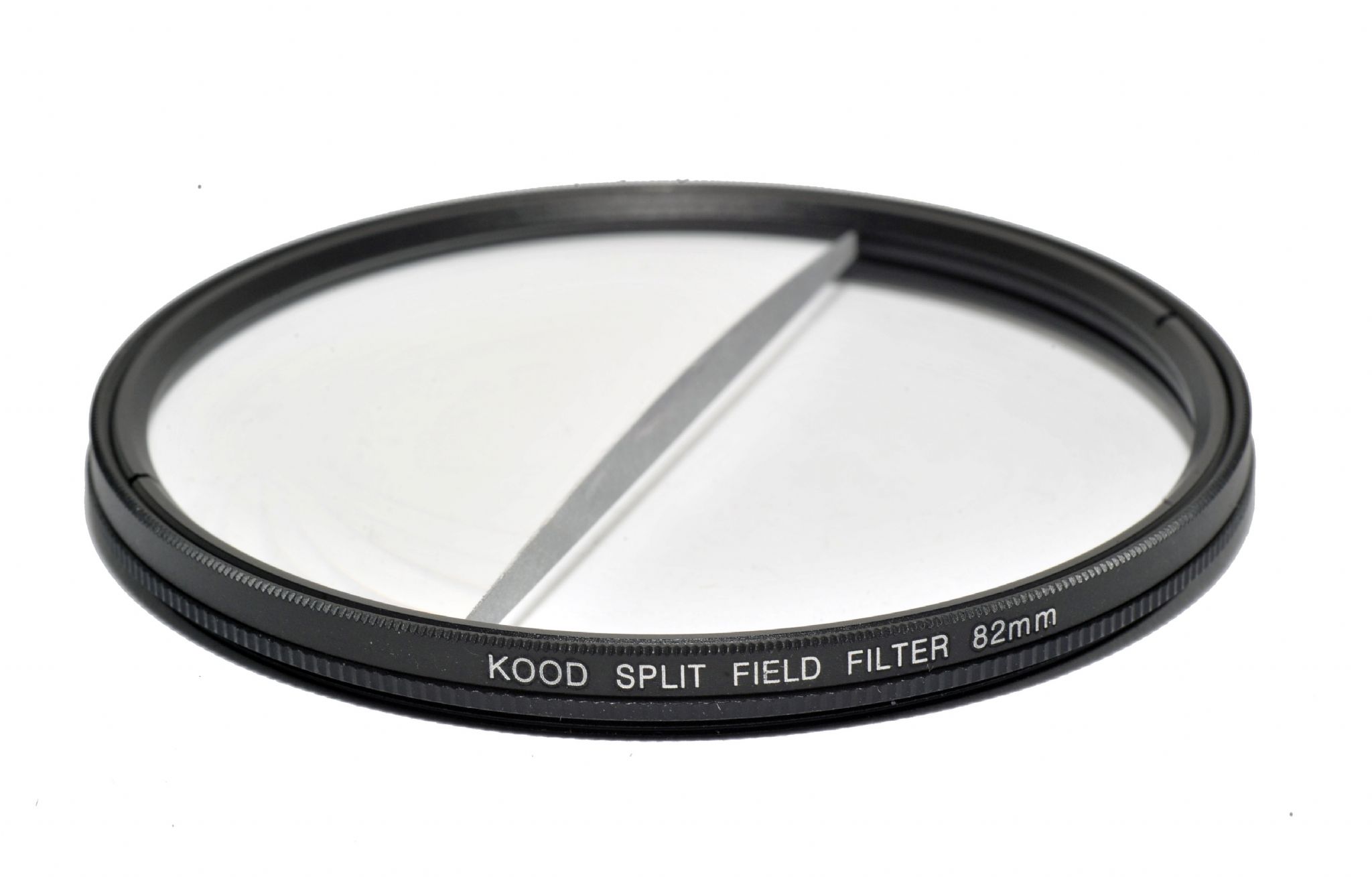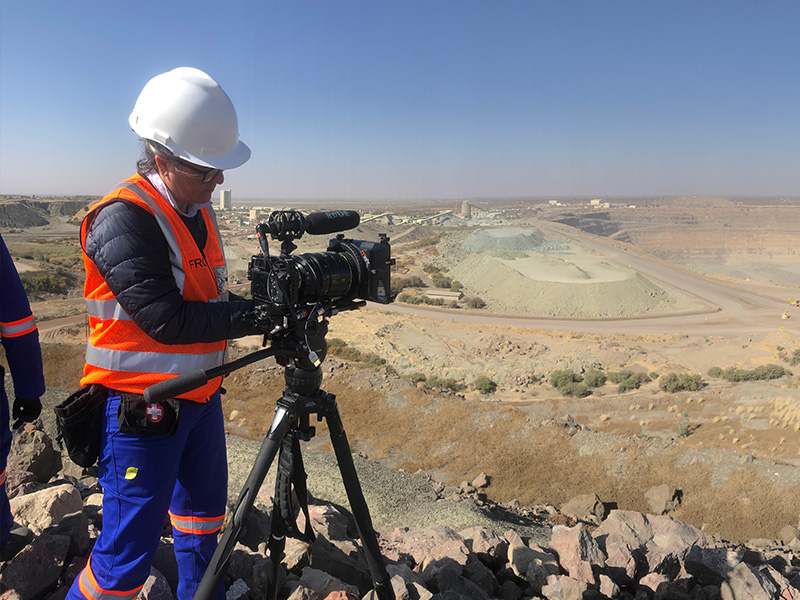DOCUMENTARY
NOTHING LASTS FOREVER
By Heloisa Passos, ABC, DAFB
CONCEPT
We used anamorphic lenses for most of the film. It is a deconstruction of reality. We do not adopt crude language. All the characters are real, but the diamond market is a great symbolic invention that passes through notions of tradition, family and property. This frame format brings a fictionalization within this world. It’s content full of irony, fantasy and science fiction elements yet brutal, because we’re talking about capitalism in social and economic disparity scenario.
There was no script or storyboard. Speech writing only happened in the editing process. What existed before filming was image research done by Jason himself, which allowed us to imagine how we could make the frames. It has a very strict visual construction method. The archival material used on the scenes was not planned and was only included at the time of editing.
All of this has to do with my broad crafted background, which involves many years of fiction, combined with Jason’s upbringing, who was an assistant to Errol Morris. When “Manda Bala” was being made, I watched “The Thin Blue Line” understood what he wanted, a desire linked to the control of the image, so it was also in “Nothing Lasts Forever”. He gave me the book by Darius Khondji as a gift, which made me think about what representation is and what fictionalization is. One of the sequences that came out of these concepts is the meeting between gemologist Dusan Simic and entrepreneur Martin Rapaport in India. I used an anamorphic Angénieux zoom lens and did not turn off the camera after the lecture. I managed to make a giant sequence shot until I got to the conversation between the two because of that. It was a fluke. We photographers need to be in search of form, just as we need to be open to other things that are happening. Rapaport, who is a major New York diamond dealer, was not in the film yet, but he became one of the main characters from that unexpected scene.


CAMERAS AND LENSES LIST
Sony F55
Sony Alpha 7s
Sony Alpha 7s II
Alexa Mini
LENSES:
Cooke anamórfica /i SF (25mm e 32mm)
Angenieux Optimo anamórfica A2s (56-152mm)
Hawk anamórfica V-Plus
Cooke s4 (18mm/25mm/35mm/50mm/100mm)
Close-up 1/2/3
Split-Field diopter 1/2/3


STEPS
After a few years, Jason decided to focus only on diamonds. In 2013, we interviewed gemologist Dusan Simic in New York and began shooting laboratories in New Jersey that work on pressurizing carbon. We continued to receive support from a few more small funds and in 2014 we went to Surat, a city that is the diamond cutting center in India. In most of these places in the world Jason and I travelled together. The film crews were always very small, with assistant and sometimes a local producer.
The Showtime channel joined as a producer in 2017 and we started working with a consistent budget, we call it real money. We had already shot several sequences, which we present separately.
We came back with Dusan Simic to India in 2018, after Showtime joined. It was my second visit to Surat and Jason had also been there two or three other times. This gave us more access. This film took a long time due to access issues. These are very veiled places, as Indian journalist Melvyn Thomas says, interviewed by us. You can’t easily get into that kind of factory.
INTERVIEWS
Most of the interviews were shot with two cameras to allow us to switch frames in the montage. One camera was placed almost on top of the other. The concern was that the interviewee’s gaze did not leave the line of sight of those watching the film, the spectator. Not only with the composition we also worried with the height of the gaze, with the axis. It is an obsessive search for symmetry and composition.
The interview with Aja Raden, a jewelry designer, took place in an almost empty room room. Each object placed in this frame was well-thought and produced. Eduardo Enrique Mayén participated as an additional photographer and shot this scene.







DIAMONDS
In addition to this microscope, we also always had a set of filters: close up 1, 2 and 3, which was purchased by the production company. As we didn’t have an anamorphic macro, I used these close ups to simulate the macro in the lenses we had. We also used a filter called Split Field, a crystal with a close up half moon and the other hollow half-moon. This made it possible to focus the diamond in detail and at the same time show, in the same composition, an action that was taking place close by, like a man approaching the factory.
I looked for a light that would provide punctuation on the material we made of the diamonds, like a haze in the glow of the stone itself. If there wasn’t a spotlight available, I would look for a spot on the location where there would be some light that would bring in side or back lighting.



TRAVELS

POSTPRODUCTION

INTERVIEW WITH DIRECTOR JASON KOHN
AT THE BERLIN FESTIVAL

MINI BIO
Heloisa Passos is one of the most renowned and awarded directors of photography in Brazilian cinema. Among the more than 50 films she has photographed are internationally awarded feature films such as “Manda Bala” (awarded at the 2007 Sundance Film Festival), “Lixo Extraordinário” (nominated for an Oscar in 2011, as co-director of photography) and “Viajo Porque Preciso, Volto Porque Te Amo” (selected for the Venice Film Festival in 2009 and awarded at the festivals in Havana, Lima and Rio). In 2017, he directed the documentary “Construindo Pontes”, selected for the Brasília Festival of Brazilian Cinema and for the IDFA (Holland), among other shows. On TV, he directed cinematography for series such as “Me Chama de Bruna” (Fox). He also did additional camera work on the documentaries “Democracia em Vertigem” (2020 Oscar nominee) and “Citizenfour” (2015 Oscar winner). In fiction cinema, he photographed features such as “Fortaleza Hotel” (2021), “Deslembro” (2018) and “O Que se Move” (2012). She won cinematography awards at the Sundance, Rio and Gramado festivals, among more than 20 awards, including the Cinema Eye Honor. She is a member of the Associação Brasileira de Cinematografia (ABC), the Collective of Women and Transgender People of the Department of Photography of Brazil (DAFB) and Cinematographersxx (CXX), in addition to being a member of the Academy of Motion Picture Arts and Sciences in Hollywood.







